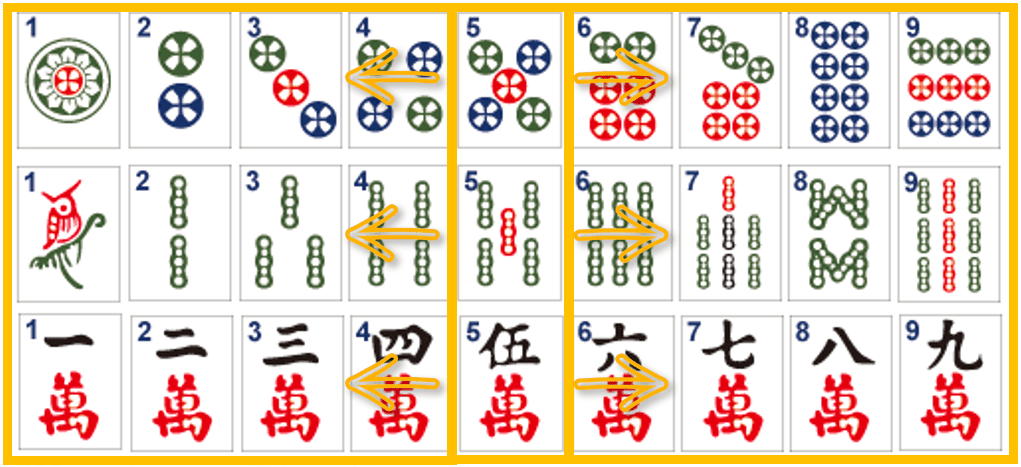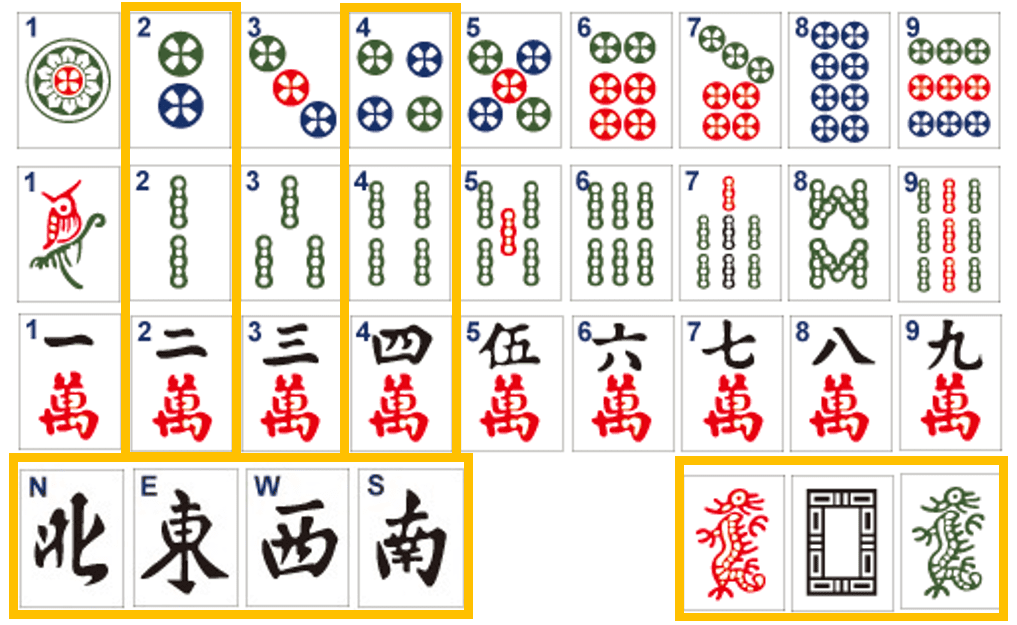How Can We Help?
TILE EFFICIENCY (Article 182)
Tile efficiency is based on suited tiles. Since there are three suits numbered 1-9, tiles 456 are the most efficient in the Consecutive Run category, which is the most flexible category on the card. Discarding tiles 123 and 987 in that order (outside-in) would leave the most efficient tiles, 456 (inside-out), for joker exchanges. Using tile efficiency for discard planning is an advanced strategy that requires strong situational awareness and social acuity skills. The purpose is to maximize the potential for joker exchanges.

If not playing Winds, discard them first because they are less likely to be exposed to Joker. The next tiles to discard are Dragons and Year tiles because 2s are prevalent due to the sheer number of hands in both the Year and Evens categories. Also, consider tiles that are being discarded or exposed and escalate those as discards. For example, during the begin and middle game, if a player claims a 5 Dot and exposes a pure pung, discard the 5 Dot next.

Towards the end of the 3rd wall, a switch occurs to prepare for the end game (4th wall) where risky discards not needed should be escalated (i.e., fresh [i.e., no 5 Cracks in discards or exposures], Dragons [especially White Dragons], Flowers). If you are playing to win in the end game, discard tiles inside-out and keep tiles that have already been discarded or are in exposures because they would be safer to discard than fresh, unaccounted-for tiles.
If jokers are not needed (e.g., set, pair hand), use this strategy to sabotage opponents’ hands by discarding tiles inside out.
Many players with success have tested this theory. It’s a recurring topic on Nitty-Gritty Let’s Play Livestreams so check the American Mah Jongg Skills and Strategies Matrix (Article 210) for the latest video demonstration.
